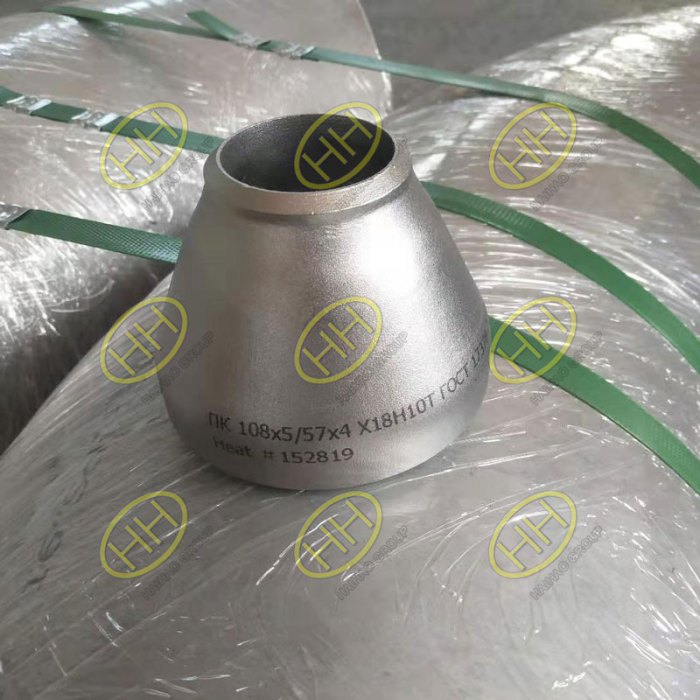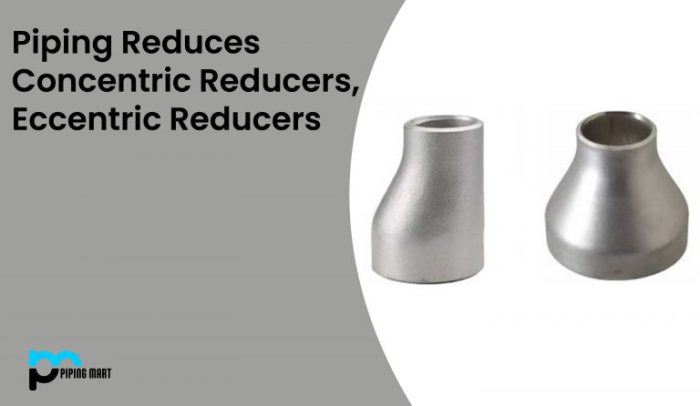Concentric and eccentric reducers maintain the same center line elevation – Concentric and eccentric reducers play a pivotal role in piping systems, ensuring the maintenance of the same center line elevation. This introductory paragraph delves into the significance of these components, highlighting their distinct characteristics and applications.
The ensuing paragraphs provide an in-depth analysis of the flow characteristics associated with both concentric and eccentric reducers. We explore the impact of inlet and outlet diameters on flow patterns and pressure drops, elucidating the advantages and disadvantages of each reducer type.
1. Introduction to Concentric and Eccentric Reducers

Concentric and eccentric reducers are essential components in piping systems, designed to facilitate transitions between pipes of different diameters. They play a crucial role in maintaining flow efficiency and preventing pressure imbalances within the system.
Concentric reducers, as the name suggests, have a concentric inlet and outlet, resulting in a symmetrical shape. Eccentric reducers, on the other hand, feature an offset inlet and outlet, creating an asymmetrical design.
2. Flow Characteristics of Concentric Reducers
Flow Patterns
Concentric reducers introduce a gradual change in pipe diameter, creating a smooth transition for the flowing fluid. The flow pattern is typically characterized by a uniform distribution of velocity across the cross-section of the reducer.
Pressure Drops
The pressure drop across a concentric reducer is primarily caused by frictional losses as the fluid passes through the reduced diameter section. The ratio of inlet to outlet diameters significantly influences the pressure drop, with larger ratios resulting in higher pressure losses.
Applications, Concentric and eccentric reducers maintain the same center line elevation
Concentric reducers are commonly used in applications where a gradual reduction in pipe diameter is required, such as:
- Connecting pipes of different sizes
- Reducing the flow velocity in a piping system
- Balancing pressure in parallel piping branches
3. Flow Characteristics of Eccentric Reducers

Flow Patterns
Eccentric reducers create a non-uniform flow pattern due to the offset inlet and outlet. The fluid tends to concentrate towards the bottom of the reducer, creating higher velocities in that region.
Pressure Drops
The pressure drop across an eccentric reducer is generally higher than that of a concentric reducer of the same size. The eccentricity of the reducer affects the pressure drop, with higher eccentricity leading to increased pressure losses.
Advantages and Disadvantages
Advantages:
- Reduce the risk of cavitation
- Prevent sediment accumulation
- Facilitate drainage
Disadvantages:
- Higher pressure drop compared to concentric reducers
- May introduce turbulence and noise
4. Maintaining Center Line Elevation: Concentric And Eccentric Reducers Maintain The Same Center Line Elevation
Importance
Maintaining the same center line elevation when using concentric and eccentric reducers is crucial for proper system operation. Misalignment can lead to excessive stress on the piping system, resulting in leaks, vibration, and premature failure.
Methods
To ensure proper alignment and elevation, the following methods can be employed:
- Using pipe supports to maintain the desired elevation
- Installing reducers with built-in alignment guides
- Employing laser alignment tools to verify the accuracy of the installation
Consequences of Failure
Failure to maintain proper center line elevation can have severe consequences, including:
- Reduced system efficiency
- Increased pressure drop
- Mechanical failure of the piping system
5. Applications of Concentric and Eccentric Reducers

The choice between concentric and eccentric reducers depends on the specific application requirements. Concentric reducers are suitable for applications where a gradual change in diameter is desired, while eccentric reducers are preferred when sediment accumulation, cavitation, or drainage is a concern.
| Application | Concentric Reducer | Eccentric Reducer |
|---|---|---|
| Connecting pipes of different sizes | Yes | No |
| Reducing flow velocity | Yes | No |
| Balancing pressure | Yes | No |
| Preventing sediment accumulation | No | Yes |
| Reducing cavitation | No | Yes |
| Facilitating drainage | No | Yes |
Query Resolution
What are the key differences between concentric and eccentric reducers?
Concentric reducers maintain a constant center line elevation, while eccentric reducers have an offset center line. Eccentric reducers are advantageous in applications where space is limited or when reducing flow turbulence is desired.
How does the ratio of inlet to outlet diameters affect the flow characteristics of concentric reducers?
A smaller ratio of inlet to outlet diameters results in higher pressure drops and more turbulent flow. Conversely, a larger ratio leads to lower pressure drops and less turbulence.
When should eccentric reducers be used instead of concentric reducers?
Eccentric reducers are preferred when space is constrained or when reducing flow turbulence is critical. They are commonly used in applications such as pumps, compressors, and valves.